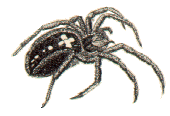 |
Networks / Pajek |
| Package for Large Network Analysis |
How to
visualize genealogies with Pajek
I would like to use Pajek for laying out an old family tree, people around 1530, in GEDCOM format. I need a special layout because there used to be a lot of 2nd, 3rd or 4th weddings and other "incidents". I have donwloaded pajek and wanted to play with it but couldn't find the right options to use to layout a standard GEDCOM file. When I download the "Oldham.ged" file for testing, Pajek recognize the format and generates FAMS number in the "vector" line. From that, all I can do is generate a circular layout with the "draw" button (I need to increase the number of vertices in the option menu first.) Could you provide me with a simple sequence of operations I should perform to layout the family graph nicely? -- Jean-Daniel Fekete
Let us take the Oldham.ged as an example. Download it and read into Pajek. We shall represent the genelogy as a p-graph. For details on p-graphs see the Douglas White's P-graphs page.
Options/Read-write/Gedcom-Pgraph ON
Options/Max vertices to draw 10000
read Ged file ... using network read buttun
Info/general/network
The network has 17804 vertices and 17661 arcs. Usually several (weakly connected) components exist in large genealogies. They can (should?) be analysed separately.
Net/Components/Weak 2
Info/partition
There are 153 nontrivial weak components (clusters); cluster 18 has 1117 vertices. Let's extract it and produce an initial layout using macro LAYERS.
Operations/Extract from network/Partition 18 18
Macro/Play .../pajek/macro/genea/layers.mcr
Draw/Draw partition
Layers/Resolution/Low
Layers/Optimize .../Complete
Move/Fix/y
Now we can manually edit the obtained picture. Press right mouse button and select a subregion to edit. To return to the complete picture select the option Redraw.
p-graphs usually contain a lot of subtrees. The interesting cases (marriages between relatives) are in the biconnected parts - you can identify them using
Components/Bi-components
or, simply by removing the subtrees by
Net/Transform/Reduction/Degree/All 2 Yes
We get a network on 840 vertices. Again there can be several components.
Net/Components/Weak 2
Info/partition
...
How to?; Pajek; Vlado/Networks